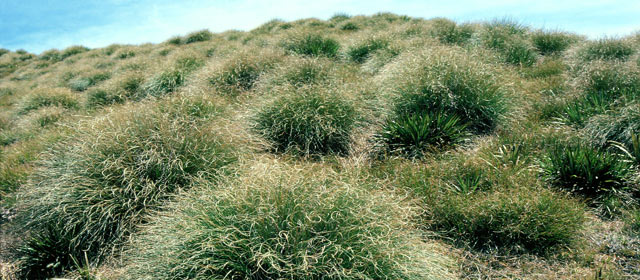Story summary
Tussock grasslands
The main plants in New Zealand’s native grasslands are tussocks – grasses that grow in the form of a clump. The tussock shape protects the plant, and helps it survive fire and drought.
Short tussocks
Short tussocks (less than 50 centimetres tall) include silver tussock and hard tussock. They mainly grow at lower altitudes. Most short tussock grasslands are now used for farming.
Tall tussocks
Tall tussocks (up to 1.5 metres tall) are mostly species of Chionochloa:
- Red and copper tussocks grow on the North Island’s volcanic mountains, and lower-altitude areas of the South Island.
- Snow tussocks grow in alpine areas.
History
After Polynesians arrived in New Zealand, around 1250–1300 AD, they burnt large areas of forest. Native grasslands spread into the cleared areas, and had covered about 31% of the country when European settlement began in the 1840s.
Europeans changed many grasslands for farming. They burnt native grasses, planted exotic grasses, and grazed animals on the land.
Today, people value tussock grasslands for their beauty and ecological importance. Tussocks are also popular with gardeners.
Damage to grasslands
Scientists have found that tussocks can grow back after fire, but can be killed by grazing animals. In some areas, farmers are still burning and grazing grasslands. This exposes the soil to weeds and rabbits, and can make it vulnerable to erosion.
Tussocks and water
Tussock grasslands are very good at collecting water. Tussocks can hold water like a sponge, letting it go gradually. They can also catch water from fog. Some tussocklands provide water for people to use.
Land ownership
Many native grasslands are on land owned by the government and leased to farmers. Much of this land is in the South Island high country.
Some parts of high country farms have now been turned into reserves, to protect the grasslands and help produce water. Other, more productive, parts are still farmed.





